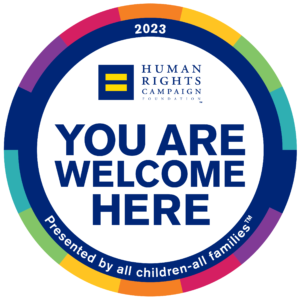Frequently Asked Questions
What geographical area do you serve?
We serve LA County and parts of Orange County, Riverside County, and San Bernardino County.
Who can become a foster parent?
Anyone over the age of 25 who is interested in providing a loving home to a child or youth in foster care can apply to foster through Five Acres regardless of race, color, national origin, marital status, sexual orientation, or gender.
Do I need special training?
Yes, but we provide this training for you. Training involves an orientation and 24 hours of pre-approval training. You will also need to become CPR/First Aid certified and maintain the certification. Once you are an approved foster parent, you will need to complete at least 8 hours of continuing education annually to maintain your approval status.
What is a family assessment (home study)?
A family assessment (or what Five Acres calls a home study) is required for all resource families to be approved. It is a psycho-social assessment of you and your family that is based on individual and joint (if you are a couple) interviews, questionnaires that you have completed, and all documentation you are required to submit. A thorough family assessment should consist of the following components: gathering information about you and your family, an evaluation of your desire and ability to be an adoptive parent/family, and education and preparation for foster care and adoption. Some of the required documentation includes marriage certificates, divorce documents, military discharge, and child support information. Applicants must also complete criminal and child abuse clearances, physical exams and TB screenings, and provide personal references. We will guide you in this area.
Do I have to live in a home to be a resource parent?
No, you may live in a house or in an apartment as long as you have the necessary space to accommodate a child. You also do not need to own your home or apartment.
How long, on average, does it take to become a Resource Parent?
On average your pre-approval training usually takes a month. After that it takes about three to four months to complete the process and be ready for a child to join your home. The time it takes largely depends on how quickly you submit your paperwork, have your criminal clearances completed, and are available for the family assessment interviews.
May I specify the age range and genders I would like to parent?
Yes. It is important that the age and gender of the children who join your home fit in well with your family.
How long will it take for a child to join my home and family?
Once you have been fully approved, a foster child can join your home immediately. The characteristics of the child you wish to join your home can impact this. The larger the age range you request, sibling groups, and different ethnicities, the faster you can be matched with a child.
What is the maximum number of children I can have in my home?
The maximum number of children allowed in a home is six, including minor birth children. Birth children can share a room with foster children (room sharing for all children depends on the age and gender).
Am I free to discipline a foster child as I see fit?
No, there are strict disciplinary guidelines. No physical punishment, such as hitting, slapping, or shoving is permitted; and no withholding of the necessities of life, such as food and clothing, are allowed. This is true for all children in your home, including any birth children you may have.
Will I receive any type of payment for caring for a foster child?
Yes, resource parents receive a tax-free, monthly stipend per child as established by the State of California. The County also issues a Medi-Cal card, which allows for free medical and dental care, as well as some counseling services. If a child 5 or under joins your home, you are eligible for Women, Infant and Children (WIC) benefits, too.
What if I have an emergency during the evening or weekend?
We have someone on call at all times: after hours, weekends, and holidays who can support you in case of an emergency.
Can a child in foster care be adopted?
The number one priority in foster care is reunification with the birth family. When a child cannot safely return to their birth family, they may be adopted. We call this process foster-to-adopt. In Los Angeles County, all families are approved to both foster and adopt so that if a child moves toward the plan of adoption, it can happen quickly and smoothly.
How long does it take to finalize an adoption for foster care?
All foster care case plans are very different and there are many factors involved in a case moving from foster care to adoption. A child may be in your care for as long as one to two years before adoption becomes an option. Once parental rights have been terminated for the birth family, an adoption MAY be finalized within 6 months; however, that is not a guarantee as each case is unique and the final decisions are made by the Children’s Dependency Court.
Are there post-adoption services?
In Los Angeles County, there are many supportive services and resources for families after an adoption through foster care is finalized. Please see the Five Acres website for our APSS services (Adoption Promotion Support Services) for a wide range of post-adoption assistance.
Does financial support stop once an adoption is finalized?
When adopting from foster care, the adoptive family is entitled to Adoption Assistance Program (AAP) financial support once adoption placement papers are signed. This is a monthly benefit that continues until the child is 18 years old. The monthly AAP rate is equal to what the county foster care rate would have been should that child have remained in the foster care system. Additionally, the child is entitled to Medi-Cal benefits until the age of 18.
Is there contact between the birth parents and the adoptive parents after the child is adopted?
Whether or not there is continued contact is at the discretion of the adoptive parent(s) and the birthparent(s). Legally, there does not have to be contact. However, it is important to assess what is in the best interest of everyone involved.
Learn more about our Foster Care Programs and the Steps to Approval.

